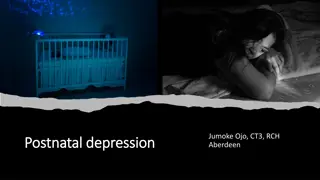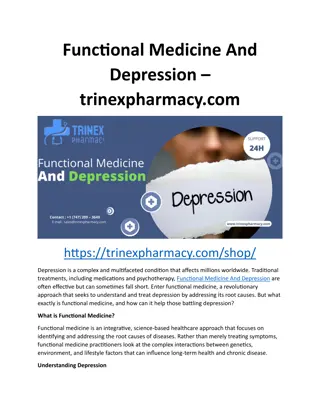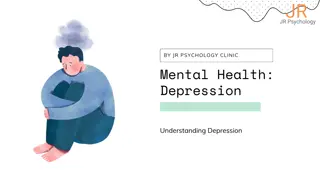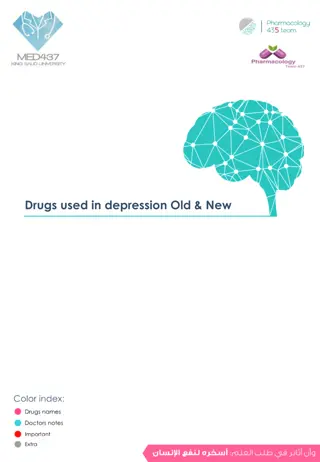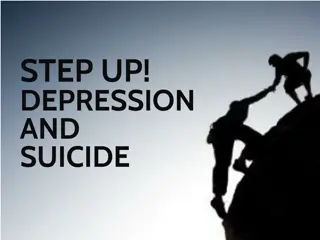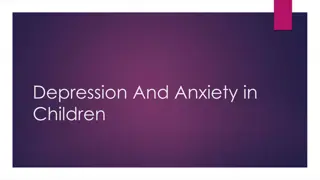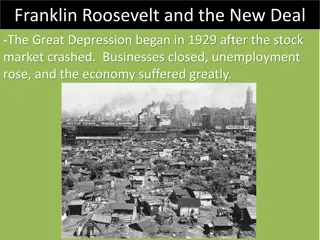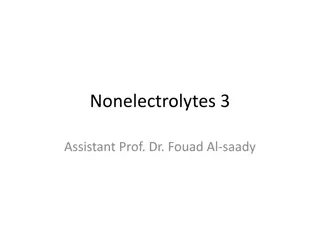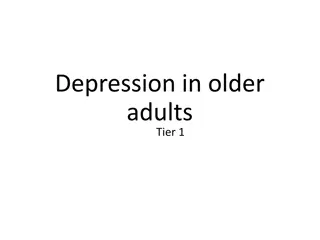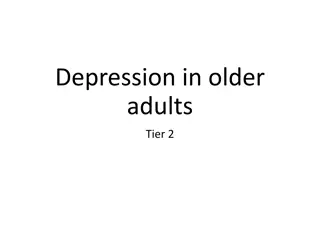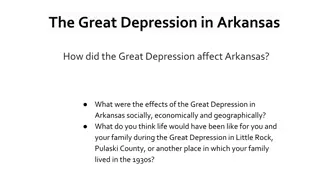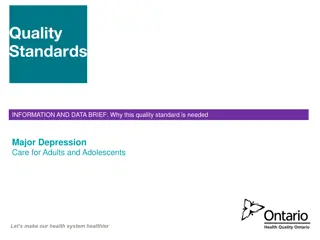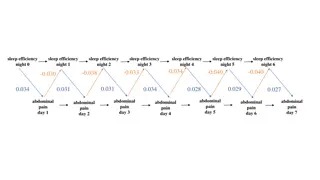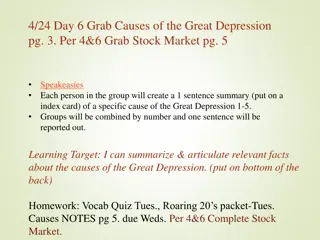
Collaborative Approach to Depression Treatment: Manual-Based Strategies
Explore the benefits and challenges of using treatment manuals in counseling practice, focusing on the importance of customization and collaboration in achieving positive client outcomes. Learn how to navigate criticisms and considerations while integrating core skills and personal creativity into manualized treatments.
Download Presentation

Please find below an Image/Link to download the presentation.
The content on the website is provided AS IS for your information and personal use only. It may not be sold, licensed, or shared on other websites without obtaining consent from the author. If you encounter any issues during the download, it is possible that the publisher has removed the file from their server.
You are allowed to download the files provided on this website for personal or commercial use, subject to the condition that they are used lawfully. All files are the property of their respective owners.
The content on the website is provided AS IS for your information and personal use only. It may not be sold, licensed, or shared on other websites without obtaining consent from the author.
E N D
Presentation Transcript
Treatment of Clients Experiencing Depression A Collaborative Approach to Care January 27, 2018 * Tex-CHIP Training Series
Using Treatment Manuals in Counseling Practice Breathing Life into Manual-Based Treatments
What is a treatment manual? Standard presentation of a treatment protocol Portrays content and processes of therapeutic activities for a specific presenting issue Intended for a specific client population 3 components: Client activities Counselor activities Materials
Why use treatment manuals? 1) provide an overall framework outlining treatment and session goals especially helpful for counseling students learning a road map to promoting recovery from symptoms helpful for seasoned counselors learning a new intervention 2) supply strategies that aid the counselor in achieving the goals 3) guide the counselor as they negotiate challenges that arises over the course of treatment.
Criticisms and Considerations Criticisms Too rigid and routine of an approach Depict treatment client development as steadfast and linear Generic treatment only permits use of certain knowledge and counseling skills Standardized approaches promote standardized counselors Considerations When applied inflexibly, all of these things are likely true There is a middle ground between rigidity and complete unstructured interventions Result is the basis of evidence-supported treatments and evidence-based practice
Oh, queso, what now? The instrument of change will always be you- the best manualized treatments are those uniquely yours, but integrate core package of skills Relationship first- the creativity will source from the estuary of your identities Understand the model that manual is based on Know the skills and processes Describing them Providing rationale for them Delivering them Evidence for anything is sample-specific, so adaptations across the intersections of cultural identity is imperative Collaborate with peers and supervisors Practice in a way that supports your growth and client outcomes
Overall Session Structure 1. Greet client establish relational connection Therapeutic alliance 2. Review previous session Content Process Check on issue and action plan Conceptualize issue in context 3. Introduce goal for session and develop agenda 4. Implement activity* 5. Process activity Helpfulness Meaning of skill Awareness Meaning of use Degree of motivation 6. Develop action plan 7. Summary, motivation, and closure
Structuring the Activity 1. Introduce skills and give examples 2. Provide rationale 3. Request acknowledgement (buy in) 4. Describe/demonstrate skill components (EDUCATE) MODEL use of the skill 5. PRACTICE the skill Evaluate performance (collaboratively) Provide encouragement and praise as needed Modify skill use or directions as needed 6.
Treating Depression Using the STEADY Program
What we see in our office Depressed mood most of day, most days Decreased interests or pleasure in activities Weight fluctuations Changes in sleep Psychomotor changes Fatigue/loss or energy Feelings of worthlessness or guilt Difficulty concentrating or making decisions Thoughts of death, dying, suicide 5 symptoms during 2 weeks period Plus all other qualifying criteria
What is in your conceptualization toolkit Ts + Bs + Fs = meaning Cognitive Model Feelings Core Beliefs Rules and Assumptions Situations Thoughts Meaning Response Thoughts Actions (a) Feelings, (b) physiology, (c) action
We Need a Road Map STEADY Program
STEADY Program Overview Screening Intake and Evaluation Medical Case Behavioral Health Managemen t Choice Session Phone Contact A1 C1 A2 C2 A3 C3 A4 C4
Our Treatment Plan Healthcare Domain: Behavioral Health Provider: Mental Health Counselor Goals: Interventions: a) Decreased symptom severity as indicated by a score less than 25 on depression symptom scale a) Educate, model, and practice cognitive copings skills using the STEADY curriculum (Sessions T1-T4) Objective: Provide alleviation of depression symptoms as indicated by client report of decreased activity level, depressed mood, low engagement in pleasurable activities, fatigue, and difficulty making decisions b) Increased functioning as indicated by engaging in pleasurable activities 5 days per week b) Educate, model, and practice engagement in social and success-oriented activities using the STEADY curriculum (Sessions A1-A4). c) increased utilization of social supports and community resources as indicated by access/use of 3 supports/resources per month. c) Provide linking to supports and resources as indicated.
Choice Session AGENDA Mood Questionnaire (appendix) Introductions and overview of counseling Be personable, but appropriate Confidentiality Info about the STEADY manual content and process Medication check in and review mood questionnaire Inventory of personal beliefs Review side effects Make medication plan Choosing how to change your life * Mood questionnaire *
Choice Session YOUR PERSONALITY DOWNWARD SPIRAL HAS 3 PARTS FEELINGS VERSUS UPWARD SPIRAL THOUGHTS ACTIONS FEELINGS
Fun Activities: A-1 CHECK IN REVIEW PREVIOUS SESSION INTRODUCTION TO MODULE IDENTIFYING AND PLANNING FUN ACTIVITIES SOCIAL VERSUS SUCCESS ACTIVITIES FUN ACTIVITIES MENU KEEPING TRACK OF FUN ACTIVITIES MOOD & ACTIVITY LOG TAKE HOME TASK
Changing Your Thinking: T-2 CHECK IN AND MEDICATION REVIEW REVIEW PREVIOUOS SESSION THE A-B-C TECHNIQUE BILL AND STEVE EXAMPLE C-A-B REVIEW ARGUING AGAINST NEGATIVE THOUGHTS QUESTIONS TO CREATE POSITIVE COUNTER THOUGHTS A-B-C FORM TAKE HOME TASK
REMEMBER THE MANUALS REMEMBER OUR PROGRAM WELL! STAY MOTIVATED, STAY AMAZING!


